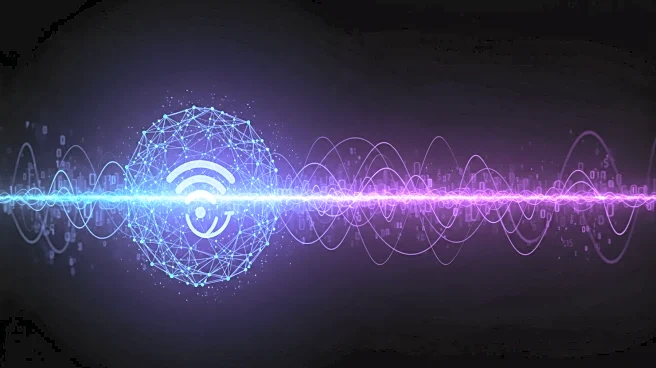What's Happening?
Recent research has explored the integration of electromagnetic (EM) radiation with quantum factorial networks to address the limitations of traditional Wi-Fi systems in urban environments. Quantum factorial networks leverage quantum superposition and entanglement to optimize wireless communication infrastructure, improving resource allocation and decision-making speed. The study highlights the potential of these networks to enhance signal fidelity, energy efficiency, and coverage density. Researchers have demonstrated performance gains using beamforming and EM field manipulation, and AI-augmented quantum models for user localization and disaster resilience. The findings suggest that combining EM radiation with quantum technologies could lead to secure, scalable, and energy-efficient communication solutions, essential for the growing demand in IoT and 5G connectivity.
Why It's Important?
The integration of quantum technologies with EM radiation represents a significant advancement in wireless communication, addressing the challenges posed by the exponential growth of IoT devices and urban digitization. Traditional Wi-Fi systems struggle with throughput, latency, and coverage limitations, hindering the potential of interconnected ecosystems. Quantum factorial networks offer a transformative architecture that could revolutionize wireless communication by enabling real-time optimization and efficient resource allocation. This development is crucial for industries relying on robust communication networks, such as smart cities, healthcare, and industrial IoT landscapes. The research paves the way for future wireless systems that are more efficient, secure, and capable of handling increased connectivity demands.
What's Next?
The study proposes further exploration of quantum-enhanced Wi-Fi networks in real-world implementations, including smart cities and healthcare systems. Researchers aim to develop a mathematical framework for modeling the conjunction of EM radiation and quantum states, optimizing wireless networks. The feasibility of large-scale implementation and potential challenges will be assessed, with a focus on practical deployment and cost-benefit analysis. As quantum technologies continue to evolve, ongoing research will be essential to fully realize the benefits of quantum factorial networks in wireless communication.
Beyond the Headlines
The integration of quantum technologies with EM radiation could lead to long-term shifts in wireless communication, influencing ethical and legal dimensions related to data security and privacy. As quantum networks become more prevalent, regulatory frameworks may need to adapt to address new challenges in communication protocols and network management. The cultural impact of enhanced connectivity could also reshape societal interactions and the way information is accessed and shared.











